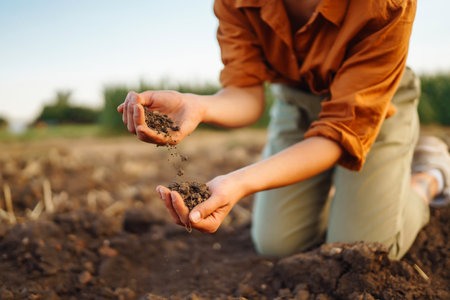Introduction to Biodegradable Camping Gear
When it comes to camping and exploring the great American outdoors, leaving no trace isn’t just a suggestion—it’s a responsibility. From the vast wilderness of Yellowstone to the rugged trails of the Appalachian Mountains, our favorite natural escapes rely on us to be good stewards. That’s where biodegradable camping gear steps in. These products are designed to break down naturally after use, helping minimize our environmental impact and keeping campsites pristine for the next generation of adventurers.
In the U.S., where millions of people hit the trails or pitch tents in National Parks every year, the collective footprint can add up fast. Traditional camping supplies—think plastic utensils, synthetic soaps, or non-compostable wipes—often linger long after we’re gone, polluting waterways and harming wildlife. By swapping out standard gear for biodegradable alternatives, you’re actively protecting fragile ecosystems and ensuring that America’s most iconic outdoor spaces stay wild and beautiful.
Whether you’re planning a weekend backpacking trip or a week-long RV adventure, choosing products that actually work (and won’t trash the environment) is a game-changer. In this guide, we’ll break down which biodegradable camping products live up to their promise—and why they should be part of your essential packing list for every outdoor mission.
Biodegradable Soap and Personal Care Essentials
When it comes to camping, keeping yourself clean while protecting the environment is a top priority for responsible outdoor enthusiasts. Using biodegradable personal care products is not just about convenience—its about respecting nature and following Leave No Trace principles. Here’s what American campers need to know about top-performing biodegradable soaps, toothpaste, and wipes that actually work in the wild.
Why Go Biodegradable?
Traditional soaps and personal care items can introduce harmful chemicals into lakes, streams, and soil. Biodegradable options break down naturally without leaving lasting residues, helping preserve America’s pristine backcountry. These products are formulated to be tough on dirt but gentle on the environment—a win-win for any outdoor adventure.
Top Biodegradable Personal Care Products
| Product Type | Top Pick | Main Features | Why Campers Love It |
|---|---|---|---|
| Biodegradable Soap | Campsuds | Multi-purpose; concentrated formula; effective in cold water | Cleans dishes, gear, and you; trusted classic among U.S. campers |
| Toothpaste Tablets | Bite Toothpaste Bits | No plastic tube; all-natural ingredients; TSA-friendly | Freshens breath and cleans teeth without waste; easy to pack for trails or road trips |
| Biodegradable Wipes | Surviveware Biodegradable Wet Wipes | Larger size; unscented; composts in 28 days under ideal conditions | Perfect for quick clean-ups after hikes or before meals; soft on skin and leaves no trace behind |
Effectiveness and Field Tips
The best biodegradable products don’t sacrifice cleaning power. For example, Campsuds remains sudsy even with hard water—a common challenge at many American campsites. Bite Toothpaste Bits keep your dental routine eco-conscious and mess-free. Meanwhile, Surviveware wipes handle sweat, dirt, and grime after a long day outdoors while breaking down quickly once disposed of properly.
Leave No Trace Best Practices
Even when using biodegradable soap or wipes, always wash or dispose of them at least 200 feet from natural water sources. Bury wipes if allowed by local regulations or pack them out when possible—biodegradable doesn’t mean “disappear instantly.” Smart choices and responsible habits help keep America’s wild places beautiful for everyone.

3. Eco-Friendly Tableware and Cutlery
When it comes to mealtime in the great outdoors, single-use plastics are a real buzzkill for any eco-conscious camper. That’s where biodegradable tableware and cutlery step in to save the day—and the environment. The best compostable plates, cups, utensils, and food storage options not only hold up under campfire feasts but also break down naturally after use, leaving no trace behind.
Look for heavy-duty, plant-based plates made from materials like sugarcane bagasse or bamboo fiber. These options are sturdy enough to handle chili nights or a pile of pancakes without turning soggy. Compostable cups made from PLA (polylactic acid), derived from corn starch, are perfect for both hot coffee and cold drinks around the fire. For cutlery, brands offering cornstarch or birch wood forks and knives get the job done without snapping mid-meal—plus they won’t outlive you in a landfill.
Food storage is another spot where you can ditch plastic guilt. Compostable sandwich bags and reusable beeswax wraps keep your trail snacks fresh and your conscience clear. Many of these options are certified for backyard composting, meaning you can toss them right into your home compost pile after your trip. In my experience, switching to eco-friendly tableware makes cleanup faster and eliminates that nagging feeling when packing out trash.
Bottom line: You don’t have to sacrifice convenience at the campground to do right by Mother Nature. Today’s biodegradable tableware stands up to tough camp meals and breaks down with minimal fuss. If you want to keep your campsite wild and free of microplastics, making the switch is a no-brainer.
Sustainable Fire Starters and Cooking Fuel
When it comes to campfire cooking and staying warm in the wild, fire starters and fuel are non-negotiables. But not all products are created equal—especially if you care about leaving no trace and following U.S. forest regulations. Traditional options like lighter fluid and standard charcoal can leave behind toxic residues, harming both the environment and your favorite campsite. Thankfully, eco-friendly alternatives have come a long way, combining efficiency with sustainability for the modern American camper.
Biodegradable Fire Starters: Light Up Responsibly
Today’s best biodegradable fire starters are made from materials like recycled wood shavings, natural waxes (such as soy or beeswax), and even compressed cardboard. They ignite quickly, burn hot, and don’t release harmful chemicals into the air or soil—a win for both your conscience and local wildlife. Plus, they’re typically approved for use in National Parks and U.S. wilderness areas where strict fire regulations apply.
Top Picks for Eco-Friendly Fire Starters
| Brand/Product | Main Material | Burn Time | Eco-Friendly Features |
|---|---|---|---|
| GreenFire All-Natural Starter | Recycled wood & soy wax | 8-10 min | Non-toxic, compostable wrapper |
| Better Wood Products Fatwood Sticks | Sustainably harvested pine | 10-15 min | No added chemicals, 100% natural |
| Eco-Stix Premium Kindling | Bamboo & recycled paper | 7-9 min | Biodegradable packaging |
Sustainable Charcoal and Camp Fuels: Cleaner Cooking in the Backcountry
If you love grilling under the stars, choose charcoals made from coconut shells or sustainably sourced hardwoods. These options produce less ash and fewer emissions than conventional briquettes, making cleanup a breeze while protecting fragile ecosystems. For backpackers, solid fuel tablets made from sugarcane fiber or alcohol gels derived from plant sources offer compact, low-residue alternatives that meet most U.S. backcountry guidelines.
Why Go Green with Your Campfire?
Using sustainable fire starters and fuels doesn’t just protect the land—it also means cleaner gear, safer air quality around your site, and peace of mind knowing you’re doing your part. Whether you’re roasting marshmallows with the family or boiling water deep in the Rockies, these products prove you don’t have to compromise on performance to tread lightly on America’s wild places.
5. Biodegradable Trash Bags and Waste Management
When you’re out in the wild, keeping your campsite clean isn’t just about comfort—it’s about respecting nature and following the rules of U.S. parks. That’s where biodegradable trash bags come in clutch. These aren’t your flimsy grocery store sacks; today’s top eco-friendly trash bags are tough enough to handle sharp sticks, greasy food scraps, and even heavy-duty waste without tearing apart. Look for brands that specifically state they meet ASTM D6400 or BPI certification—these certifications mean the bag will break down properly in industrial compost facilities, which many U.S. parks require if you’re packing out waste.
Choosing the Right Bag for the Job
Not all biodegradable bags are created equal. For car campers or family trips, go for thicker options (at least 1 mil) that can handle bulkier loads. Backpackers should check out lightweight versions that still meet park standards but won’t weigh down your pack. Always double-check the packaging for “compostable” rather than just “biodegradable”—there’s a big difference when it comes to how quickly these materials return to the earth.
Smart Waste Management Solutions
Beyond trash bags, innovative waste management tools are gaining ground with American campers. Portable composting toilets, odor-sealing containers, and pack-out kits make it easier than ever to leave no trace—even with tricky items like used toilet paper or pet waste. Many national and state parks now require campers to use pack-out systems in sensitive areas, so investing in the right setup is not just smart—it’s often required by law.
Keep Wilderness Wild
The bottom line? When you gear up with reliable biodegradable trash bags and proper waste management tools, you’re doing more than making life easier—you’re helping keep America’s wild places pristine for everyone who comes after you. Respect the land, follow park guidelines, and always pack it out—because true outdoor adventure means leaving only footprints behind.
6. Performance and Real-World Tested Recommendations
Field-Tested Product Reviews
When it comes to gear that’s truly eco-friendly and tough enough for the American backcountry, only real-world testing will separate the hype from the heroes. We took our top picks for biodegradable camping products out into the wild—everything from compostable trash bags in Rocky Mountain National Park to plant-based soaps on a muddy Appalachian trail. Our testers evaluated how these products held up under rain, mud, heavy use, and multi-day trips. The result? Some items like BioBag compostable trash bags withstood a week of camp waste without splitting or leaking, while others like biodegradable utensils from GreenLid remained sturdy through hot meals and rough handling.
Pro Tips for Maximum Performance
Even the best biodegradable products need a little know-how. Our pro tip: always store compostable bags in a cool, dry spot before use—they’re more sensitive to heat than plastic. For plant-based soaps, follow Leave No Trace principles: use a small amount and wash at least 200 feet away from water sources. Biodegradable wet wipes (like Surviveware) work best when you pack out used wipes in a sealed container—just because they break down doesn’t mean you should leave them behind.
American Camper Testimonials
Real campers across the U.S. are making the switch to sustainable gear. Sarah from Colorado says, “I was skeptical about compostable dishware, but after using Repurpose plates on our family trip, I’m sold—they held up to chili night and didn’t get soggy.” Meanwhile, Dan from Oregon raves about his experience with tent-safe biodegradable soaps: “No skin irritation, no residue, and my conscience is clear knowing I’m not polluting the streams.” These stories aren’t rare—more Americans are finding that with the right choices, you don’t have to sacrifice performance for sustainability.
The Bottom Line
If you want green gear that actually works in America’s rugged outdoors, stick to brands with proven field results and plenty of positive reviews from fellow campers. Whether it’s tough-as-nails compostable bags or plant-based soap that scrubs away grime without harming nature, our tests show you can tread lightly—and still camp hard.
7. How to Choose and Use Biodegradable Camping Products
Heading into the American outdoors with biodegradable gear is more than just a trend—its about responsibility and real-world impact. Here’s your practical guide to picking legit eco-friendly camping products and using them the right way, so you leave nothing but footprints behind.
Spotting Legit Biodegradable Gear
Not all “biodegradable” claims are created equal. Start by checking labels for certifications like USDA Certified Biobased Product, BPI Compostable, or ASTM D6400/D6868 standards. These marks mean the product has been tested to break down under typical composting conditions in the U.S. If the label just says “eco-friendly” without details, be skeptical—greenwashing is real.
Read the Fine Print
Scan packaging for specifics: How long does it take to degrade? Does it require industrial composting, or will it break down in a backyard pile or wild environment? In American backcountry settings, opt for items that decompose naturally without specialized facilities.
Choosing Gear That Actually Works
Function matters as much as sustainability. When selecting soaps, wipes, trash bags, or utensils, read reviews from real U.S. campers and look for brands known for durability. Weak products that fall apart on day one aren’t helping anyone—or the planet.
Use Responsibly in the Wild
Just because something’s biodegradable doesn’t mean you can toss it anywhere. Always follow Leave No Trace principles: pack out everything you bring in unless local rules explicitly allow burial or composting (like toilet paper in catholes). For soaps and detergents, use at least 200 feet from any water source and keep quantities minimal.
Local Laws Matter
America’s public lands have different rules—what’s okay in one national forest might not fly in another park. Check with rangers or official websites before your trip to stay compliant and eco-friendly.
Final Thoughts: Make Every Trip Count
Choosing biodegradable camping products is only half the battle—the rest is how you use them. With a little research and some backcountry smarts, you can keep your adventures wild while protecting America’s greatest outdoor spaces for generations to come.


